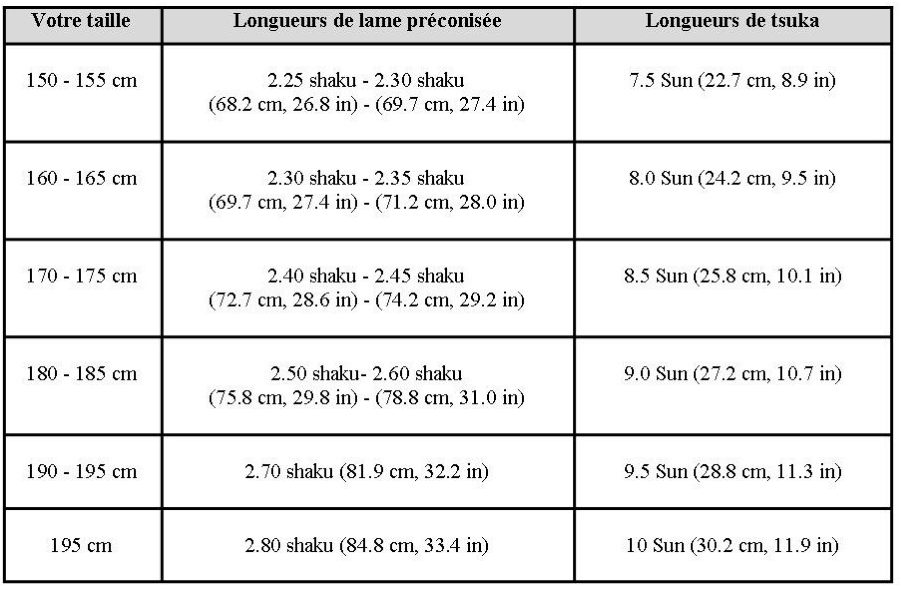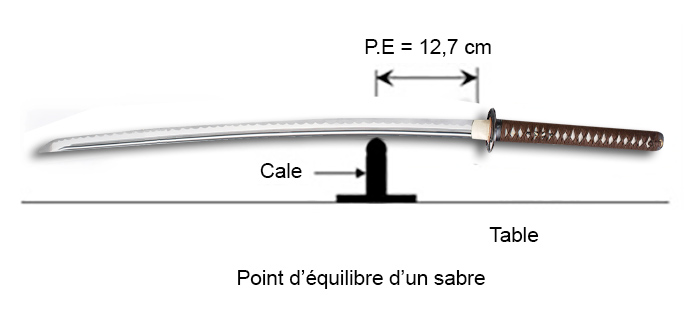- Katana 1€ to 79€
- Katana ONE PIECE
- Katana 80€ to 199€
- Katana 200€ to 599€
- Katana over 600 €
- Katana Custom
- Iaito - 模擬刀
- Wakizashi
- Tanto
- [+] Parts katana
- [+] Katana Accessory
- Engraving katana
- [+] Ninja
- [+] Chinese weapon
- [+] Wooden weapons
- [+] Knife
- [+] Outfits
- [+] House and Objects
- Médiéval Sword
- Military saber
- Home
- Profile
- Services
- Help
- Log in
- **Cart**
- What a difference in a katana and an Iaito
- The different types of steel
- How to choose your katana
- Accessories and maintenance of Iaito and katana
- Little katana dictionary
- What disciplines to practice with a katana or an iaito
- Musashi Miyamoto the greatest samurai Japan has ever known
- The laikidoka sword: the bokken
- Kendo, the legacy of the samurai
- The making of a katana
- The Habaki of the katana
- The Kanjis
- Budo
- The Saya of the katana
- Kyudo
- The Yumi
- The Hamon of the katana
- The Tsuba of the Katana
- How to measure a katana or an iaito
- The Sageo of the katana
- The history of the Japanese sword - 1
- The history of the Japanese sword - 2
- Custom katanas and iaitos
- Chanoyu, the Japanese tea ceremony
- The Iaido
- The boshin war or the last samurai
- The best incense from Japan
- Renovation of Japanese swords
- Ninja
- FAQ
- Terms and conditions
- Site map
- Contact
- Useful links
- Private life
- Clubs & Communities
How to measure a katana or an iaito
Old unit of measure
In Japan, this blade length is still often expressed in the old Shaku unit of measurement.
The "Ni-shaku san-sun" (approximately 70 cm) is a standard length for Katanas.
The units :
Shaku = 30.2cm or 11.9inch.
Sun = 1/10 of shaku.
BU = 1/10 of Sun = 0.3 cm.
1 inch = 2.54 centimeters
The "Ni-shaku san-sun" (approximately 70 cm) is a standard length for Katanas.
The units :
Shaku = 30.2cm or 11.9inch.
Sun = 1/10 of shaku.
BU = 1/10 of Sun = 0.3 cm.
1 inch = 2.54 centimeters

The measurement parameters of the blades:
Nagasa: Measure of length (straight line) between the Kissaki and the Mune machi.
Sori: Measure of the curve between Nagasa and Mune (greatest distance).
Sori: Measure of the curve between Nagasa and Mune (greatest distance).
Table: sizes - blade lengths - Tsuka lengths

The lengths indicated in the table below are indicative.
The length of your blade may vary depending on the style, the school you practice and the recommendations of your Sensei.
The length of your blade may vary depending on the style, the school you practice and the recommendations of your Sensei.
The weight of a saber:
In terms of weight and for regular use, it is advisable not to exceed 950g. Beyond that, you risk starting to struggle and generating injuries (especially if you are just starting out: clumsy gestures, etc.). If you feel that you have the physical capabilities, take heavier, otherwise take lighter.
Basic guide for beginners:
For small and medium-sized people: from 700g to 850g
For medium and large people: from 800g to 950g maxi
For medium and large people: from 800g to 950g maxi
The balance of a saber:
In a way the weight of the sword is irrelevant. Technical and physical problems usually result from an improperly balanced blade.
Rarely considered, balance is an important factor in choosing a saber.
Many modern sabers are no longer manufactured taking this criterion into account.
Rarely considered, balance is an important factor in choosing a saber.
Many modern sabers are no longer manufactured taking this criterion into account.
Balance point of a saber:
The point of balance is important in understanding the weight and feel of a saber.
The point of balance is a point on the blade distributing equal weight on both ends of the saber. Because each blade is different, where that point is located can have varying effects.
When the balance point is near the Tsuka (grip), there is more weight on the tip of the blade. Therefore, the blade will give a feeling of heaviness in the hands. Conversely, a saber with a point of balance near the middle of the blade, will be heavier towards the Tsuka.
The point of balance is a point on the blade distributing equal weight on both ends of the saber. Because each blade is different, where that point is located can have varying effects.
When the balance point is near the Tsuka (grip), there is more weight on the tip of the blade. Therefore, the blade will give a feeling of heaviness in the hands. Conversely, a saber with a point of balance near the middle of the blade, will be heavier towards the Tsuka.
How can I find the balance point of a saber? :
In order to find the point of balance, you must first take your sword without its Saya (scabbard). Now it is very important to take extra care when handling a sharp blade.
Place your saber on the table, find a piece of wood (covered with a protective cloth) so that the saber no longer touches the table (edge upwards) .Place the Mune of the saber on the wedge (at the level of the Sori) .
Move the wedge to find the point of balance, so that neither the Kissaki nor the Tsuka Kashira touches the table. The blade should no longer oscillate.
Then take a meter and measure the distance between the Tsuba and the axis of the wood block.
The distance between the two is the position of the balance point of your saber.
Place your saber on the table, find a piece of wood (covered with a protective cloth) so that the saber no longer touches the table (edge upwards) .Place the Mune of the saber on the wedge (at the level of the Sori) .
Move the wedge to find the point of balance, so that neither the Kissaki nor the Tsuka Kashira touches the table. The blade should no longer oscillate.
Then take a meter and measure the distance between the Tsuba and the axis of the wood block.
The distance between the two is the position of the balance point of your saber.

The ideal balance point of a saber:
The ideal balance point is around 12.7 cm or 5 inches. Most good blacksmiths go for a balance point of 13.97 cm or 5.5 inches. It is the ideal value combining ease of use and cutting power.
texts: Denis Blanc
|
No comments
|




